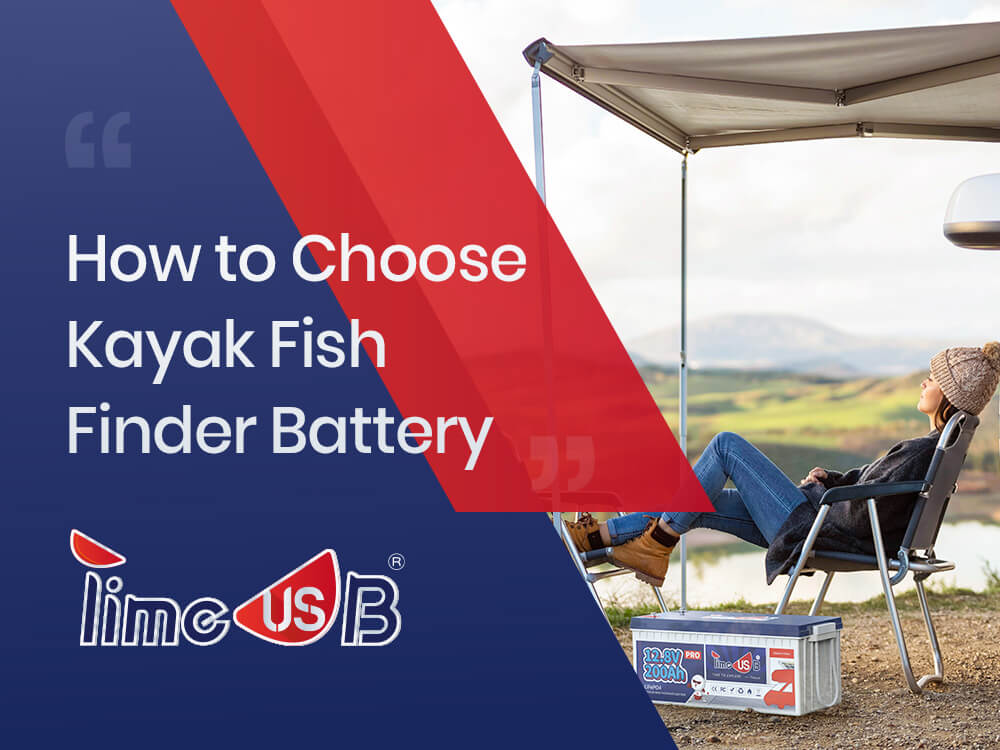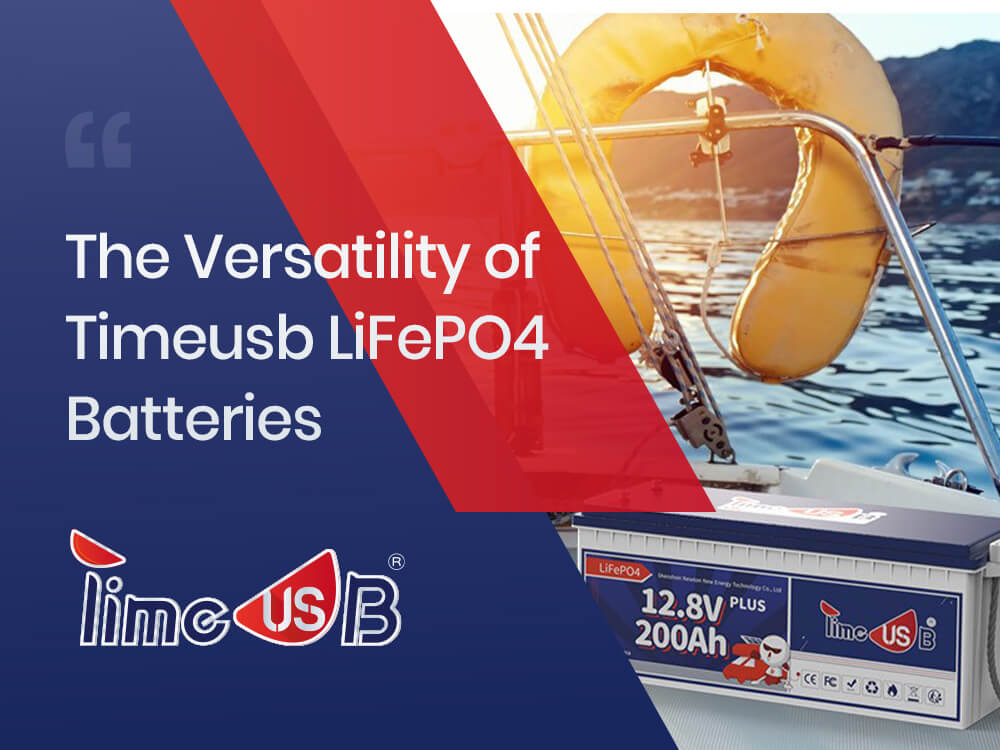How to Choose Kayak Fish Finder Battery

Kayaking and fishing are activities that blend tranquility with the thrill of the catch. A kayak fish finder can be a game-changer in locating the best spots teeming with fish. However, a fish finder is only as good as the battery powering it.
Choosing the right kayak fish finder battery involves considering a myriad of factors to ensure uninterrupted performance and durability. In this comprehensive guide, we'll go through the essentials to help you select the best battery to suit your fish-finding needs.
Understanding Kayak Fish Finder Power Requirements
The first step in choosing a battery is knowing your fish finder's power requirements. These electronic devices typically operate on a 12V system, but the amperage draw can vary. A small, basic fish finder may require a current as low as 0.1A, while more advanced models with GPS and color displays might draw 1A or higher. Refer to your device's manual to find this information, which is indispensable for selecting a battery with the proper capacity.
Battery Types and Technology
After identifying your power needs, explore the types of batteries to determine which best fits your setup.
1. Lead-Acid Batteries
Traditional lead-acid batteries are widely used due to their affordability and availability. Within this category, sealed lead-acid (SLA) batteries, including Absorbent Glass Mat (AGM) batteries, are preferred by kayakers for being maintenance-free and spill-proof.
AGM batteries are a step up, known for their better charge retention and longer lifespan compared to regular SLA batteries.
2. Lithium-Ion Batteries
Lithium-ion alternatives are the newer technology in the market. These batteries boast a higher energy density which means they can hold more power for their size and weight.
They offer a consistent voltage level throughout the discharge cycle and typically have a much longer lifespan than lead-acid batteries.
Battery Capacity and Runtime
The capacity of a fish finder battery is critical, as it dictates how long you can use your device while out on the water. Here's what you need to assess:
Rated Capacity (Ah): Batteries are rated in Ampere-hours (Ah). This rating gives an indication of how many amps a battery can deliver in an hour. For kayak fishing, a battery capacity of 7-20Ah typically suffices, but you should calculate your specific needs based on your fish finder's power draw and your expected usage time.
Estimating Runtime: A simple formula to estimate battery runtime is to divide the battery's Ah rating by the fish finder's amperage draw. For instance, a 10Ah battery powering a device drawing 1A could theoretically run for 10 hours.
Size and Weight Constraints in Kayaks
Because kayaks have limited space and buoyancy, the size and weight of your battery are important. Lithium-ion batteries are often favored for being considerably lighter and more compact. When space is at a premium, heavier lead-acid batteries may not be practical.
Durability and Environmental Resistance
Kayak environments are tough on gear. Batteries encounter moisture, temperature changes, and jarring movements. Waterproof batteries with rugged construction are preferred. While some batteries come waterproof-sealed, using additional protective battery boxes provides an extra security layer against water and impact damage.
Charging Considerations and Life Cycle
Not all batteries are created equal when it comes to charging:
- Lead-acid batteries usually require longer to charge and may need to be maintained with trickle chargers when not in use.
- Lithium-ion batteries can be charged more quickly and do not require maintenance between uses.
- Life Cycle: Evaluate how many charge cycles the battery can handle before its capacity diminishes. Lithium batteries often allow for thousands of cycles, compared to the few hundred cycles typical of lead-acid models. Lithium batteries from Timeusb have the life cycle more than 4000, making the service span up to 10 years+.
Compatibility and Mounting
Before purchasing, ensure that the battery's physical dimensions will fit within your kayak's allocated battery space. Additionally, factor in cables, chargers, and any additional gear the battery may require. Many batteries are sold with mounting kits or have proprietary systems to secure them within kayaks; compatibility with your existing setup is key.
Safety First
Safety cannot be overstated. Batteries carry inherent risks, such as fire or chemical hazards, particularly if damaged or improperly used. Opt for batteries with built-in safety features like circuit protection and thermal cutoffs. Always follow the manufacturer's guidelines for charging and storage.
Budget and Long-Term Costs
Evaluate not just the upfront cost, but also the value over the battery’s lifespan. While lead-acid batteries may be cheaper initially, you might end up replacing them more frequently than a lithium-ion battery, which has a higher upfront cost but could offer more value in the long term due to its durability and longer life.
Why Lithium Battery is A Better Choice for Fish Finder
Below is the table to tell why lithium battery is a better choice.
|
Feature |
Lithium Battery Advantages |
Lead-Acid Battery Disadvantages |
|
Weight |
Significantly lighter, making it easier to transport and causing less weight strain on the kayak. |
Heavier, which can be cumbersome in a kayak and may affect buoyancy and maneuverability. |
|
Size |
Compact size offers more flexibility for placement on a kayak. |
Generally larger and bulkier, requiring more space which is at a premium in a kayak. |
|
Capacity |
Higher energy density, meaning they can store more energy and provide longer usage for fish finders. |
Lower energy density necessitates larger batteries for the same capacity, adding to the weight and space issues. |
|
Charge Efficiency |
Fast charging capability and more efficient energy delivery, meaning less downtime and more time on the water. |
Longer charging times and less efficient power use, which might mean longer waits between uses. |
|
Lifetime |
Longer lifespan with thousands of charge cycles, reducing the need to regularly replace the battery. |
Fewer charge cycles can lead to more frequent replacements over time. |
|
Maintenance |
Virtually maintenance-free, with no need for constant monitoring or trickle charging to maintain battery health. |
Regular maintenance required to ensure longevity, which can be inconvenient for kayak anglers. |
|
Voltage Stability |
Maintain consistent voltage levels throughout the discharge cycle, ensuring that fish finders function optimally until battery is low. |
Can experience significant voltage drops as the battery discharges, which may affect fish finder performance. |
|
Environmental Impact |
Generally have a lower impact on the environment due to longer lifecycle and absence of hazardous materials like lead and acid. |
Contain lead, acid, and other chemicals which can be potentially harmful when disposed of improperly. |
|
Initial Cost |
More expensive initially but cost-effective over time due to durability and longevity. |
Cheaper upfront cost but potentially more expensive over the long run due to replacement and maintenance costs. |
|
Safety Features |
Often come with advanced safety features to protect against overcharging, overheating, and short-circuiting. |
May lack advanced safety features, which can increase the risk of accidents, especially in challenging kayak environments. |
|
Temperature Resistance |
Better performance in a wide range of temperatures. |
Performance can deteriorate in extreme temperatures, which might be typical in some kayaking situations. |
|
Discharge Rate |
Lower self-discharge rate so they retain their charge for longer when not in use. |
Higher self-discharge rate requires more frequent charging, even when not in use, to maintain the battery's health. |
Best Fish Finder Battery for Your Boat or Kayak
Selecting the perfect battery for your fish finder is pivotal to achieving seamless operation while out on the water. Essential characteristics to bear in mind include the battery's compactness, resistance to water intrusion, robustness, and portability.
It's vital to accurately gauge the battery's ampere-hour (Ah) rating. This ensures compatibility with your fish finder's energy demands and guarantees a stable and ample power reserve to maintain its operation throughout your fishing journey.
For a robust and reliable marine-grade power source, we recommend considering the Timeusb 12V 50Ah or 100Ah fish finder batteries. These units offer a harmonious blend of efficiency, capacity, and dependability, catering specifically to the marine environment of boats and kayaks.

FAQs about Fish Finder Battery
1.How Long Will a 12 Volt Battery Run a Fish Finder?
When using a fish finder with a typical energy consumption of around 2 amps, a fully charged 100Ah (amp-hour) 12V battery can be expected to sustain the device for roughly 50 hours. Contrastingly, the energy requirement for trolling motors is more intensive, often consuming 1 amp per pound of thrust at full capacity. For example, operating a 50-pound thrust motor at top capacity can fully drain the battery within two hours. To ensure battery longevity, it's crucial to avoid deep discharges—keeping it above 50% to 80% of its full capacity is advisable—and to recharge it soon after use.
2.Does a Fish Finder Need its Own Battery?
A separate, dedicated battery for a fish finder is not an absolute necessity. Often, a fish finder can efficiently share a boat's main battery used for other electronics, such as navigation devices, radios, or lighting systems.
Despite this, allocating an exclusive battery for your fish finder can confer certain benefits. For one, it guarantees a steady and uninterrupted power supply, crucial when other onboard electronics draw substantial power from the main battery. Furthermore, a dedicated battery streamlines power management and the electrical setup, potentially easing installation and upkeep processes.
3. Can You Run a Fish Finder on a Deep Cycle Battery?
You can indeed power a fish finder using a deep cycle battery. These batteries are engineered to offer reliable and prolonged power output, which favors the continual running of devices like fish finders, trolling motors, and additional marine electronics. Deep cycle batteries' resilience and sustained discharge capabilities render them apt for the demands of fish finders and similar applications.
Conclusion
The ideal kayak fish finder battery strikes a balance between capacity, size, weight, durability, rechargeability, compatibility, safety, and cost. By thoroughly assessing each factor relative to your specific needs, you will enhance your fishing expeditions with uninterrupted access to your fish finder’s insights.
Whether you lean towards the economy and availability of lead-acid batteries or the efficiency and performance of lithium-ion options, ensuring the right choice will mean fewer worries about power and more focus on the pleasure of kayak fishing. Remember that your angling success hinges on the reliability of your tools, so invest wisely in your battery selection for a fruitful return in fishing productivity.


![[Full Guide] The Comprehensive Guide to LiFePO4 Battery Life](http://www.timeusbpower.com/cdn/shop/articles/The_Comprehensive_Guide_to_LiFePO4_Battery_Life_757d2749-9468-4739-ac83-0960c27749b0.jpg?v=1722918256&width=1080)
